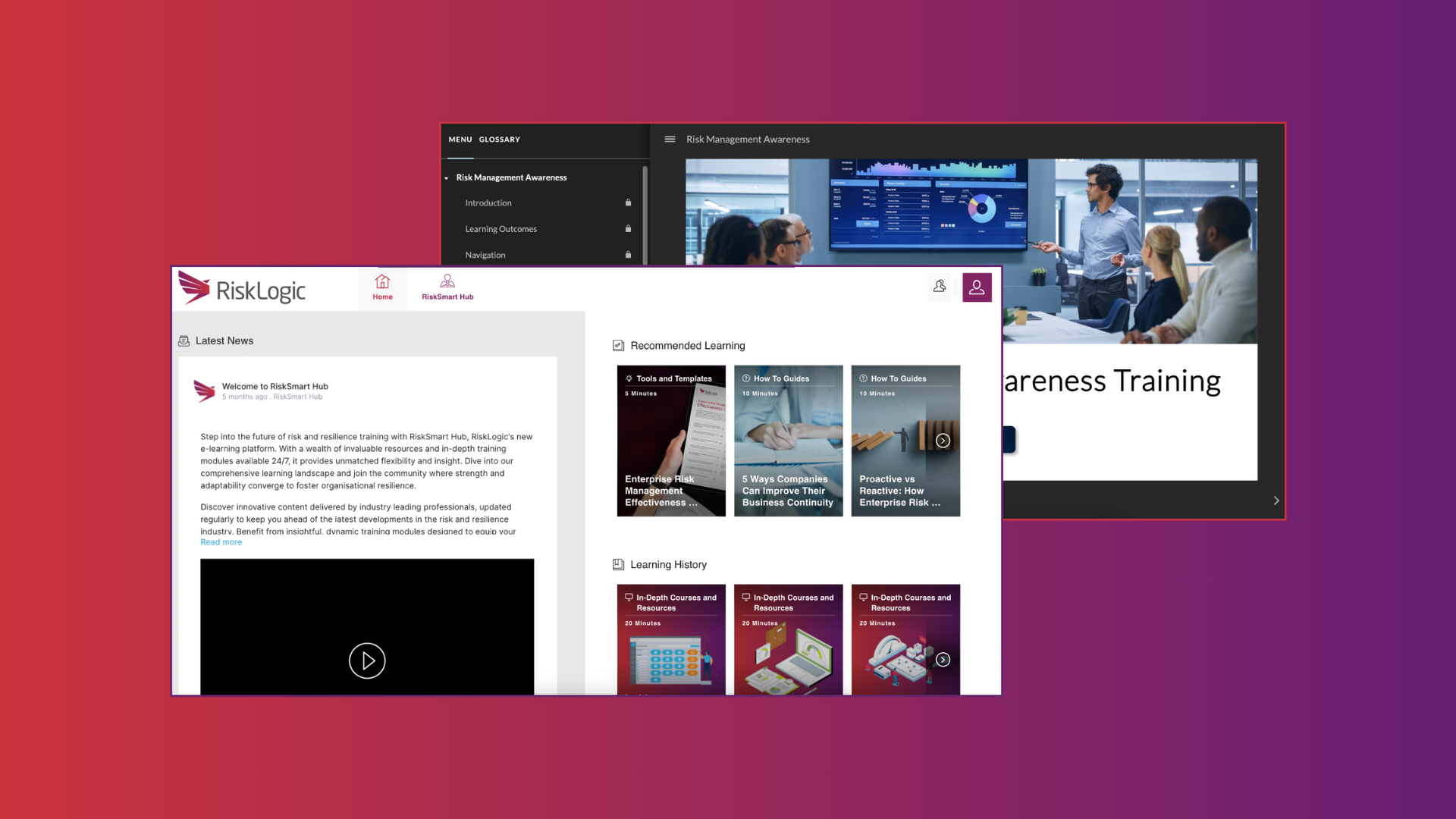-
Url copied to clipboard.
Risk and resilience management training is more important than ever before for organisations, in an ever-evolving environment where uncertainty is the only certainty. It’s crucial that organisations not only implement their training, but to do so efficiently and effectively.
In the past, traditional methodologies dominated the industries approach to risk management training – but offered limited scope for flexibility and personalisation. However, new advancements in risk and resilience management training e-learning platforms provide a revolutionary approach that is flexible, cost-effective, and completely remote.
The Traditional Approach: Inflexible, Time-Consuming, and Costly
Traditional risk and resilience management training is delivered through instructor-led sessions, workshops, seminars, and even off-site trainings. These delivery methods, while comprehensive, often fail to account for the unique needs, constraints, and preferences of individual learners or organisations. The in-person nature of traditional training methods also present their own set of challenges.
These methods are limited by geographic constraints. Learners must be in a specific location at a specific time to participate in training. The logistics of coordinating schedules and gathering multiple individuals in one place results in significant time consumption and often leads to delays.
Traditional training methods also lack flexibility. The training’s pace is dictated by the curriculum set for the time allotted. Learners who may need more time to absorb certain concepts of traditional training methods don’t have the luxury of learning at their preferred pace and are instead forced to keep up with the classroom.
Costs are also a significant issue of traditional training methods. Beyond the training fees themselves, additional costs such as travel, venue booking or even getting renowned experts on board can price many organisations out of top-tier risk management training.
e-Learning & RiskSmart Hub: A Better Way Forward
RiskSmart Hub revolutionises the landscape of risk and resilience management training, addressing the shortcomings of traditional methodologies through a flexible, cost-effective, and remotely accessible solution.
The most evident benefit is the elimination of logistical constraints. RiskSmart Hub, as an online e-learning platform, can be accessed from anywhere, at any time, from any device. This flexibility allows individuals to learn at their convenience, ensuring an uninterrupted work schedule which does not need to adapt to an allotted training schedule.
RiskSmart Hub’s diverse course categories cater to a broad range of organisational needs and knowledge levels, from the basic foundations of risk and resilience management to in-depth nuances. The training can be personalised to everyone’s pace, as opposed to the ‘one-size-fits-all’ approach of traditional training.
Beyond that, RiskSmart Hub delivers a breadth of interactive and engaging content, which improves learner retention and deepens their understanding of the course material.
RiskSmart Hub is also a more cost-effective and affordable option. Without physical logistic costs, it is cheaper to run, making it a great choice for organisations with tighter training budgets. It provides world-class risk and resilience management training that’s accessible to all.
Notably, RiskSmart Hub also makes it easier to measure and track learner progress. Comprehensive learning history allows learners to easily access what they have previously learnt through the platform – something that is far more difficult with traditional training methods.
An Evolution in Risk and Resilience Management Training
Transitioning from traditional methods to risk and resilience management training with RiskSmart Hub entails not just adopting a new platform, but embracing a shift in how we view and approach training in the risk and resilience management industry.
RiskSmart Hub’s approach offers flexibility, customisation, and accessibility – countering the inflexibility and high costs of traditional methods. You’re no longer just providing training but optimising the process of learning and empowering your teams with the tools to handle risk more effectively.






